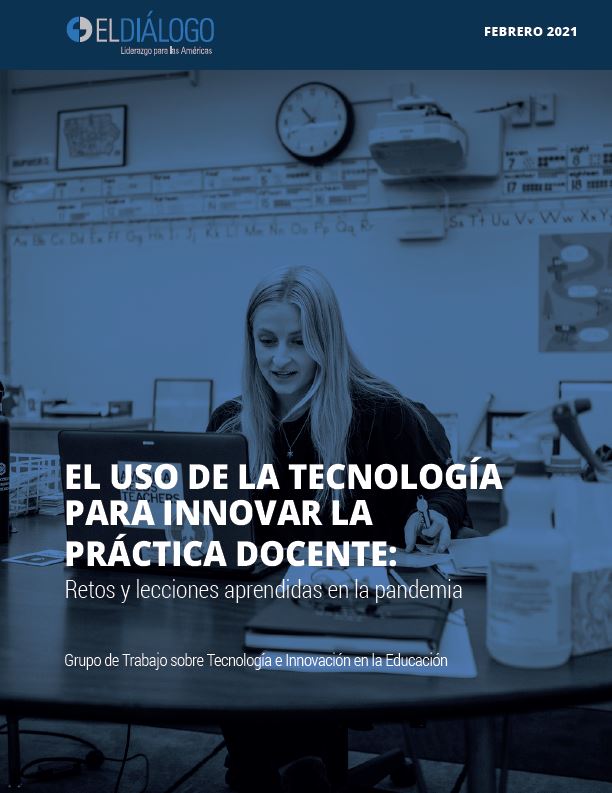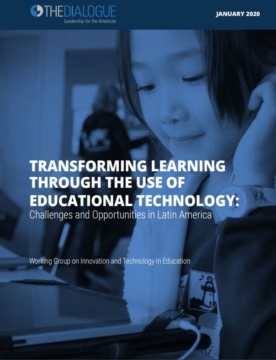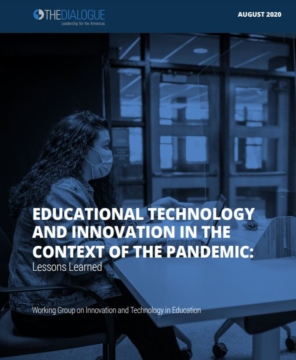Cuba 1.5?
When Yoani Sánchez started blogging, she probably did not anticipate the worldwide impact that her portrayal of life in Havana would have.
This post is also available in: Español
The following report is only available in Spanish.
Although great progress has been made in incorporating educational technology in recent decades, the incorporation of technology by teachers has been a slower process. Prior to the pandemic, many teachers already expressed the need for greater and better training in the use of digital tools, educational platforms and more. However, given the unforeseen impact of the pandemic on educational systems and the closure of schools, these demands became even more urgent.
As a result of the pandemic and the renewed urgency of this topic, the Working Group on Technology and Innovation in Education met on December 8, 2020 to discuss how technology can support and facilitate the practice of teaching during the pandemic and in the future.
The discussion focused on three dimensions in which teachers have used and will continue to use educational technologies: curation of content and learning environments; learning management and evaluation; and professional development and communities of practice.
The report presents the main challenges that countries face when trying to effectively implement and scale viable technological initiatives that surfaced in the context of the pandemic in the region, within each of those three dimensions. Similarly, it describes the lessons learned during the pandemic, highlighting the importance of creating user-friendly tools and platforms, as well as providing access to curated and curriculum-aligned content for all. The report also emphasizes the importance of continuous teacher training policies guided by a flexible competency framework tailored to the needs of countries in the region.
First, there is a need for digital competency frameworks, as well as the urgency to develop standards on data use and intellectual property protection within digital education platforms. Developing such guidelines would respond to the challenges countries face in implementing teacher evaluation and training strategies in relevant information and communication technologies (ICTs), as well as to motivate teachers to exchange best practices and resources or use automated student assessment platforms.
Second, there is a need to improve (a) digital platforms features like content repository and learning assessment functions as well as (b) the skills of teachers to use these platforms effectively. Many platforms have complex interfaces or do not respond to the actual needs of teachers. To resolve this disconnect, it is essential to promote cross-sectoral collaboration and engage teachers in the design processes. Additionally, many teachers have limited data analysis competencies which prevents optimal use of existing platforms, especially to use student performance assessment functions. Investing in the development of the analytical skills of teachers or school principals could improve pedagogical decision-making significantly.
Finally, it is important to enhance and expand existing partnerships with the private sector. Governments in the region should use private sector capabilities to expand and improve their virtual platforms and teaching training offerings. In the pandemic, these collaborations have been expanded, in many cases, thanks to the low-cost agreements that were negotiated in the emergency situation. Looking ahead, however, public-private partnerships present a huge opportunity to improve and scale technological infrastructure in the region's educational ecosystems.
The Education Program thanks AT&T Foundation, Discovery Education, Facebook, Microsoft, Imaginable Futures, Pearson and SBA Communications Corporation for their generous support in the making of this report.
When Yoani Sánchez started blogging, she probably did not anticipate the worldwide impact that her portrayal of life in Havana would have.
The Working Group on Technology and Innovation in Education presents the key areas Latin America has to improve upon in order to effectively incorporate technology in the classroom.
On June 24, 2020, the Working Group on Technology and Innovation in Education met to discuss the challenges presented by closing schools and the opportunities that educational technology can provide.


